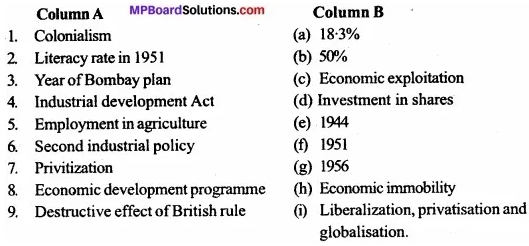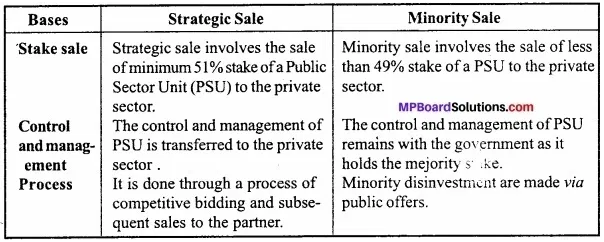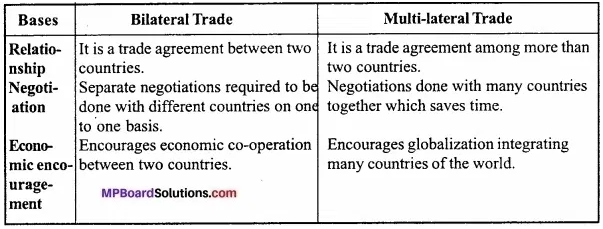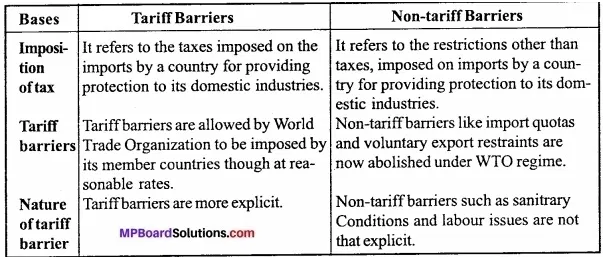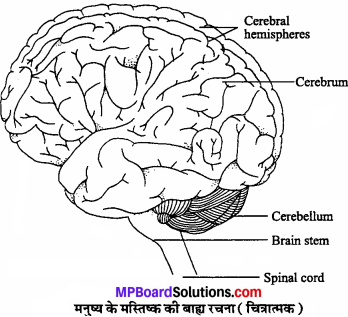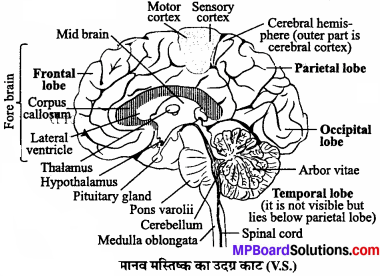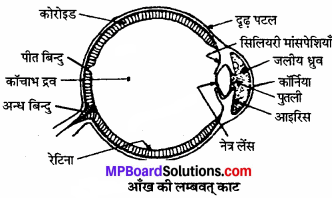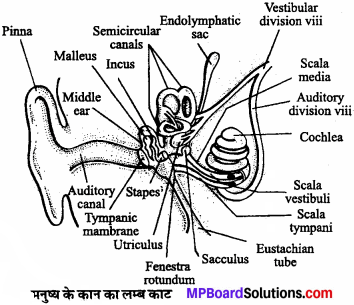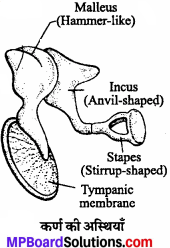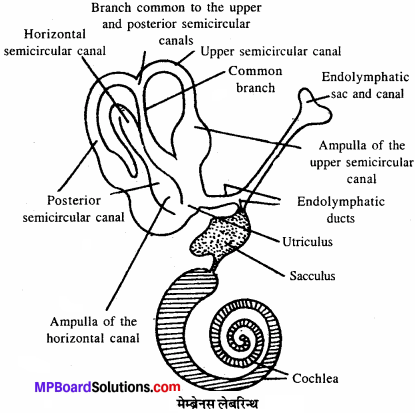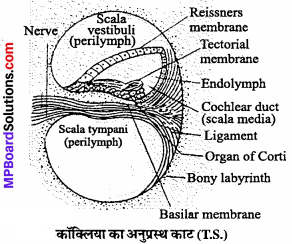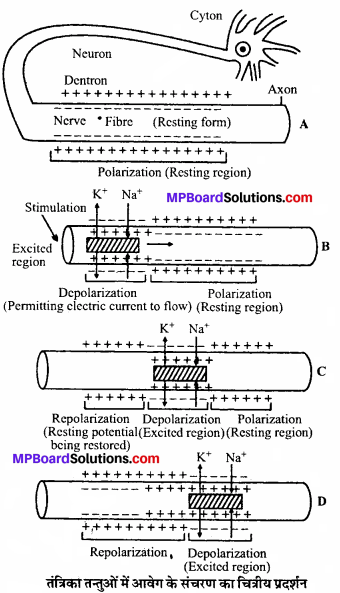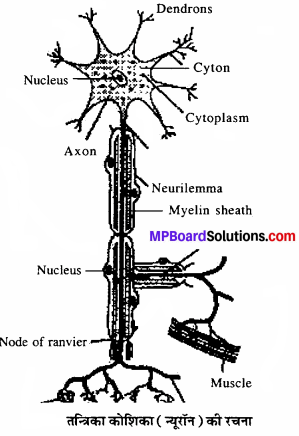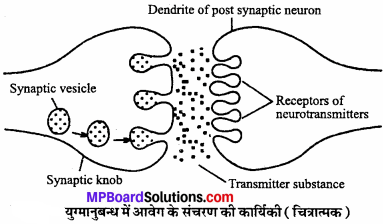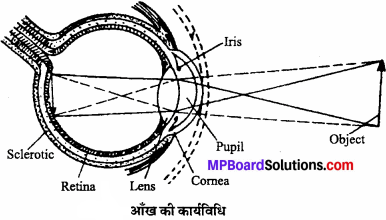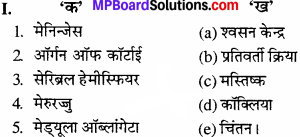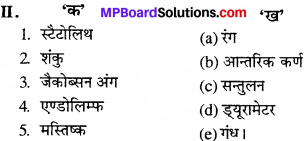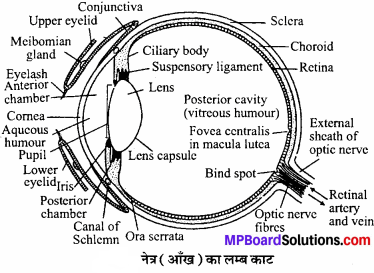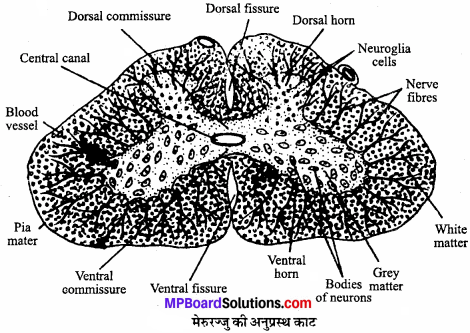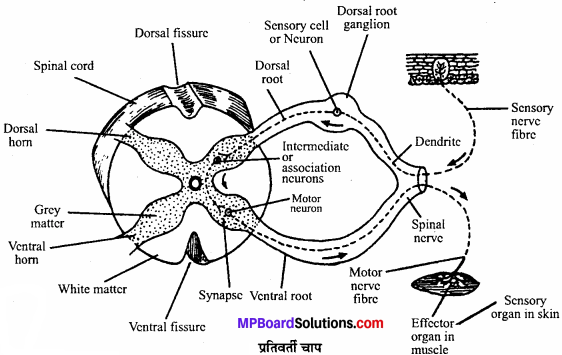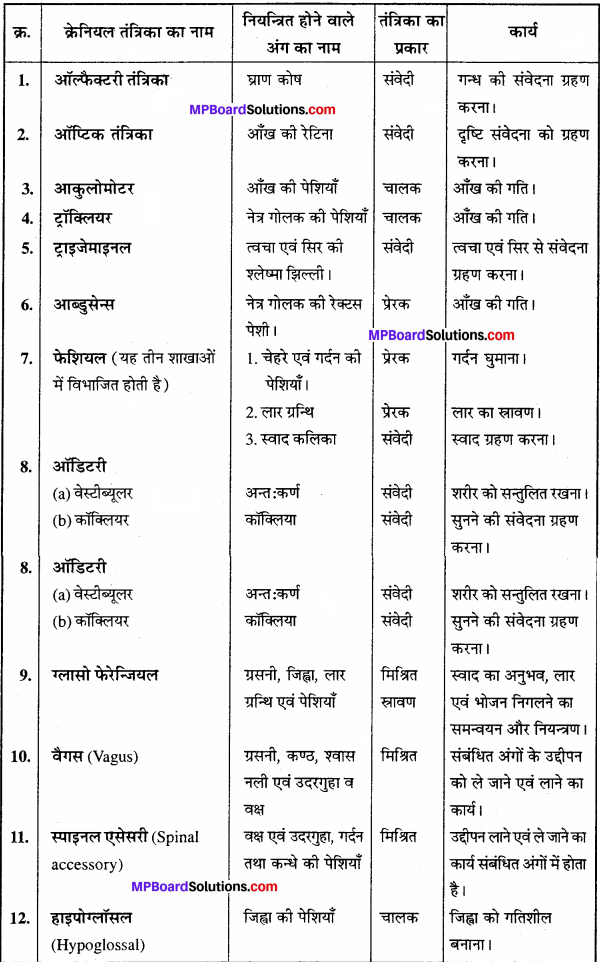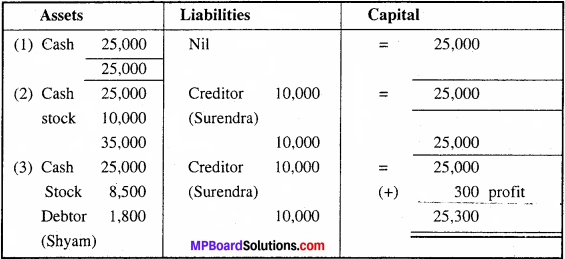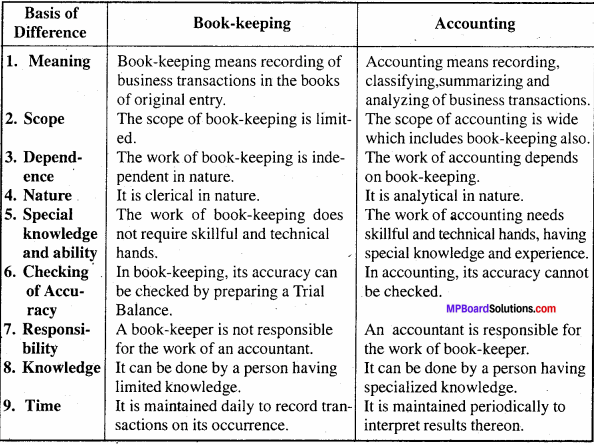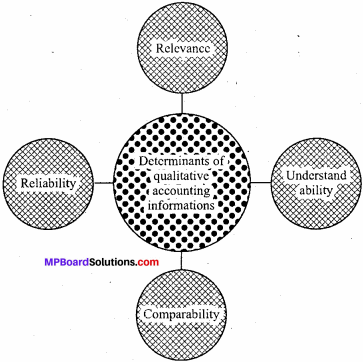MP Board Class 12th Business Studies Important Questions Chapter 1 Nature and Significance of Management
Nature and Significance of Management Important Questions
Nature and Significance of Management Objective Type Questions
Question 1.
Write the answer in one word / sentence :
- How many basic, elements of management are there ?
- In how many fields of the need of management are felt ?
- What are the levels of management ?
- Which function of management is called basic or primary function ?
- Write the name of that level of management in which supervision of work of employees is essential ?
- If father is a manager and his son is also a manager. Then what is this ability called ?
- What is systematic knowledge called ?
- To get the work done by others is called what ?
- With what all the activities of management are related ?
- The directions which are given to the members for guidance and control of behavior in business is called what ?
- To fix the policies in management is the function of what level ?
- Need of coordination is required at what level ?
- To achieve the results by use of personnel skill is called what ?
- Knowledge achieved by training and experience and is used for social welfare is called ?
- In management do all the characteristics of art are included ?
Answer:
- Five
- In all regions
- There are three levels of management:
- High level
- Middle level
- Low level
- Planning
- Lower level or supervisory level
- It is called inborn ability
- Science
- Management
- With human being
- Code of conduct
- At high level management
- At all the three levels of management
- Art
- Profession
- Yes, in management all the characteristics of art are included
![]()
Nature and Significance of Management Very Short Answer type Questions
Question 1.
What is management ?
Answer:
Management is both science and an art in which the functions of planning organizing, coordinating, directing, motivating and controlling of human endeavour are performed to achieve the predetermined targets and objects by adopting scientific methods.
Question 2.
What is the importance of management in business ?
Answer:
The importance of management in business is same as the role of brain in human body.
Question 3.
Write the meaning of management.
Answer:
By management, we mean the art of getting the work done by others. It includes how best quality work can be get done by workers efficiently with less cost of production.
Question 4.
What are the 5 M’s of management ?
Answer:
The 5 M’s of management are :
- Men
- Material
- Machine
- Money
- Method
Question 5.
“Why it is said management is universal ?” Explain.
Answer:
The principles of management is applicable in all sorts of organizations whether they are trading or non-trading like schools, clubs, etc. However, the same principles of management are not applicable to all organizations, rather it depends on the type of organization and it can be modified as per the need. Hence, we can say that management is universal.
Question 6.
Write the first and last functions of management.
Answer:
Planning is the first and control is the last functions of management.
Question 7.
Which officers are included in high level of management ?
Answer:
Following officers are included in high level of management:
(a) Board of directors
(b) Managing directors
(c) Chief manager.
Question 8.
Write the definition of management.
Answer:
- According to Henri Fayol : “The management is to forecast, to plan, to organize, to command, to coordinate and to control.”
- Management is the art of knowing exactly by what you want your men to do and then seeing that they do it in the best and cheapest way.
Question 9.
Write any two functions of middle level management.
Answer:
Two functions are :
- To prepare plans for the achievement of objectives.
- To explain and interpret the policy decision taken by the management.
Question 10.
What do you mean by levels of management ?
Answer
There are three levels of management :
- Top level
- Middle level and
- low level management. In the top level, board of directors and general managers see the managerial work, whereas in the middle level, different heads of department see the management work and in the lower level supervision works are done.
Though the work is done at different level still full cooperation and coordination is required at all levels of management.
Question 11.
What is effectiveness and efficiency use of resources ?
Answer
Effectiveness means completing the assigned task and achieving the predetermine goals or targets.
Efficient means not only completing the assigned task or achieving the target in the given time but also in a manner that all the available resources are utilized optimally and the task is completed in minimum cost.
Thus, effectiveness is doing assigned task within the assigned time whereas efficiency is doing the assigned task in such a manner that it earns maximum profits.
Question 12.
What do you mean by coordination ?
Answer
Coordination means bringing all the activities of various levels of management together efficiently and effectively. Proper application of management principles helps in bringing about coordination. Coordination is a grouped activity where people work together for the common goal. In common language it means “Mutual Understanding”.
Question 13.
Shyam is a manager of north block of a big construction company. He works at what level of management ?
Answer
Shyam is working at the middle level of management. His main functions are :
- He works as a chain between the top level of management and supervisory management.
- He explains policies to low level employees which are made by top level management.
- He motivates people for their high efficiency and performance of their work.
- He gives directions to his employees.
Question 14.
Why is management considered as a group activity ?
Answer:
An organization achieves, its goals with the help of diverse individuals working as a group. To make sure that each individual efforts are well coordinated and work towards the common goal an effective management provides opportunities to grow and fulfill their aspirations working as a team.
Question 15.
Why is planning considered as a primary function of management ?
Answer:
Planning gives directions for actions and lays down the framework regarding how work is to be done. All other managerial functions are performed within the framework of the plans drawn. Therefore, planning is a primary function of management which precedes all other managerial functions.
Question 16.
What is mild knowledge ? Name the person who felt management is mild.
Answer:
Mild means soft, i.e., which is not hard. In this way it means such science whose principles are not rigid. Ernest Dale felt management to be mild.
![]()
Question 17.
Why is management considered to be universal ? Explain.
Answer:
Management is found in every country, every organization and in life of every individual. Any work is not there which can be completed without management. Thus management is found in every aspect of life. Due to this reasons management is called as “Universal”.
Question 18.
“Management is an intangible force”. Why ?
Answer:
Management can be felt and experienced not seen. If a company enables its
employee to meet their targets, keeps its stake holder satisfied and eventually achieve its goal effectively. It is said to be efficiently managed. Thus, the effect of management is noticeable from the manner in which a.n enterprise function.
![]()
Nature and Significance of Management Short Answer Type Questions
Question 1.
Why is management called a multiple concept ?
(or)
Why is management considered a multifacted concept ?
Answer:
Management is considered a multifacted concept because management does not , manage a single activity rather it manages three main activities the work, the people and the operations managing work to achieve organizational goals. Three main activities are like this:
- Managing people : Managing people is the process of getting work done with the aim to transform input into desired output.
It means supervise the personal requirement of single employee and to look after the group of people as employees. ‘ - Managing work: To manage work for achieving the target.
- Managing management: To purchase raw materials and convert their problem
Question. 2.
Write any four characteristics of management.
Answer:
The characteristics of management are :
1. Management is a human activity : Management is completely related to human activity. The development of human effect is possible by management only.
2. Group efforts : The origin of management word indicates towards group efforts. Only an individual person cannot complete the work of management. Predetermined objectives can be achieved with group efforts.
3. Management is purposeful: Management is always purposeful because to attain different objectives, different junctions are performed by management.
4. Management is needed at all levels : There are three levels of management i.e. top, middle and lower. In the top level board of directors and managers see the managerial work whereas in middle level departmental heads look after the work and in lower level employees follow the instructions.
5. Management.has specific objective : Without specific objective management is not possible.
Question 3.
Explain three secondary functions of management.
Answer:
The secondary functions of management are :
1. Communication : Although communication is the secondary function of management, its importance cannot be undermined. That is why some management experts have put it in the primary function of management. Communication is an exchange of facts, ideas, opinions or emotions by two or more persons.
2. Innovation : Termed as management’s modem function, it’s basically a creative activity. It consists in doing such things, are generally not done in the ordinary course of business. It may involve various activities like introduction of a new product, new method of production, opening a new market, conquest of a new source of supply, creation of monopoly position, etc.
3. Decision making : Decision making is an important function of management. Everyday hundred of decisions are made in an enterprise. So, decision making is also a part of management activity. According to Peter F. Drucker, “Whatever a manager does, he does after making decisions.”
Question 4.
Write the functions of top level management.
Answer:
The functions of top level management of follows :
- To determine the objective of undertaking
- To pass of budgets
- To investigate the achievements and results of undertaking
- To implement the various policies like financial, marketing policies etc.
- To set up the organizational framework
- To discuss important matters related with organization
- Top management assembles the resources
i. e., men, material, rrlachine and money.
Question. 5.
Write the functions of middle level management.
Answer:
The functions of middle level management are as follow :
- To prepare plans for the achievement of objectives
- To explain and interpret the policy decision taken by the top management
- To motivate lower level management for efficient performance
- To coordinate the various activities of different units
- To act as a line between’top level and lower level
- To develop leaders for future by training and experience
- To assist or help in taking decisions related with administration.
Question. 6.
Write the functions of lower level management.
Answer:
The functions of lower level management are as follows :
- To evaluate the work of employees
- To communicate the problems and difficulties of workers to the middle management
- To guide and direct the workers about the procedure of work.
Question. 7.
Write the objectives of management.
Answer:
Following are the objectives of management:
- To achieve maximum with less efforts: The main objectives of management is to achieve maximum with less efforts. Mainly it is based on trade. It is tried in trade to achieve maximum profit and to produce goods with less cost.
- Development of employee and employer : A good management always do development of employees and employers because both are the important parts of our society. Thus the main objective of management is to develop both.
- Maintain coordination between labour and capital: The another objective of management is to maintain coordination between labour and capital.
Question 8.
Distinguish between Coordination and Cooperation.
Answer:
The difference between Coordination and Cooperation:
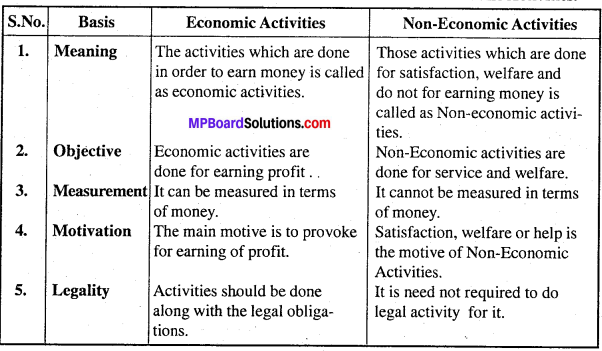
![]()
Question 9.
“Management is an inborn and acquired ability.” Explain.
Answer:
According to ancient concept, “Management is an inborn ability i.e., some people are so efficient and talented by birth that they lead and get success in the field of business.
Actually speaking this concept prevailed when ownership and management were not separated. According to the modem concept, managers are both bom and made. People with managerial aptitude can undoubtedly develop the ability to utilize it to better advantage through experiences which give them the opportunity to get things done through and with others.
Question 10.
Management is the development of people and not the direction of things”. Explain. ”
Answer:
According to L. Appley: Management is the development of people, employee, not for things because employee (labour) and institutions are the main parts of development of things. So management is related human elements. Under it development of employees are given importance and not on non-living things like machines.
Question 11.
Management is pervasive in nature. Explain.
(or)
Management is required at all levels. Explain.
Answer:
Management is required by all types of organizations whether big or small. Management is required at three levels top, middle and bottom. The business is managed at the top level by the board or directors, whereas at the middle level the manager’s function and e bottom level. Thus, management is required at all levels.
Question 12.
explain the different levels of managment.
Answer:
in general there are three levels of management:
1. Top level management: Top level management is having an important place compared to other levels of management in an enterprise. Generally the objectives of enterprise are established by the board of directors. According to E.F.L. Breech “The responsibility of board of directors is to form the policies and to control the entire organization”.
The actual operation of organization is performed by the managing director or general manager and they are called as chief executive. The function of chief executive is to implement the instructions given by Board of Directors and to make efforts to achieve the objectives. Top level management consists of the representatives of shareholders. Top level management includes, Chief Executives, Chairman, Managing Directors, Senior Executives and General Manager.
2. Middle level management: The officers between top level and lower level management are included in the middle level management. This level includes departmental head, sectional head, productional officers etc.
3. Supervisory or lower level management: In the levels of management, supervisory management is at the lowest level. It is also called as operative management. This level of management includes Superintendent, General foreman, Foreman, First line supervisor etc. This level is directly concerned with operative staff. In this level the function of supervisors is to explain the policies to employees, to establish standards, to motivate for standard work etc. At present supervisors are having an important place in organization since they are the friend, philosopher and guide of employees.
Question 13.
What is meant by middle management ? Write its functions.
Answer:
Middle management is mainly concerned with the task of executing the policies and plans chalked out by the top management. It consists of heads of department or sectional head of other executive officers in charge of different department. The middle level management work between top level and lower level management.
The function of middle management:
- To explain and interpret the policy decision taken by the top management
- To communicate the problem and suggestion of supervisory management
- To serve as a link between top management and supervisory management
- To take department decision,
- To develop leaders for future by training and experience.
Question 14.
Explain any six social responsibilities of management.
Answer:
The social responsibilities of management are as follows :
- Towards consumer: To provide right quality of products and services to consumer at right time and in reasonable price and not to produce harmful goods for society.
- Towards government: To pay government taxes honestly and timely and also the fallowing the rule and regulation of government in proper manner.
- Towards environment: To promote measures for pollution control and provide help for government pollution control program, planting trees for the welfare of society.
Question. 15.
Explain the importance of coordination.
Answer:
Without coordination none of business service in market, we need coordination in all kinds of activities. The success of any team depends upon the coordination of its activities. Following points will explain the importance of coordination.
- For unity : By coordination it makes unity in all spheres of organization and it helps in better performance.
- Development : By coordination our organization get success in field of development. Proper development of organization is possible only by coordination among the various factors of production.
- For the best utilization of factor of production : By coordination Organization can use best utilization of factor of production.
Question.16.
“Management is a process.” Explain. .
Answer:
Management is a distinct process in which through planning, organization, motivation, direction and control, one achieves the desired targets.
Management is always purposeful, it is concerned with achievement of objectives of an organization before head and to achieve this pre-determined goals of various management strategies are prepared.
Management is a continuous process. Management work is not for few days or months. All the management activities are carried out for the benefit of society so it is a social process.
![]()
Nature and Significance of Management Long Answer Type Questions
Question. 1.
“Management is a system.” Explain.
Answer:
Management is a system as it has various subsystems. Moreover, each subsystem (for example, purchases, sales, etc.) has a specific object and maintains coordination with other system. No subsystem can be viewed separately as a watertight compartment, but it has to maintain communications with other system. Hence, management has been rightly referred to as a system.
Another definitions of scholars :
“The management is to forecast, to plan, to organize, to command, to coordinate and to control.” —Henry Fayol
“Management is the process of planning and regulating the activities of an enterprise.”—E.F.L. Brech
“Management is simply the process of decision making and control over the actions of human being for the expressed purpose of attaining pre-determined goals.”—Stanley Vance
“Management is the art of knowing exactly by what you want your men to do and then seeing that they do it in the best and cheapest way. —F.W. Taylor
“Management is a process of releasing and directing human energies towards attaining definite goal.”
Question. 2.
“Management is a Profession”. Explain.
Answer:
Management is a profession. It has been adopted as a profession, recently. To attain the knowledge of management, persons work as a manager in different institutions as, Indian Institute of Management, International Council for Scientific Management. Before drawing any conclusion, it is necessary to know the characteristics of a profession and also of management. The characteristic of a profession are :
- There must be an organized and systematized body of knowledge, principles and techniques.
- Continuous acquisition of that knowledge.
- Entrance into a profession is restricted by standards established by an association of that profession.
- Existence of an organization to regulate the behavior of the members of the profession.
- Presence of ethical standards to guide the activities of the members of the profession.
- Spirit of service to the society should receive priority over economic considerations.
From the above characteristics, we may state that there are all trends which indicate
that management is moving in the direction of profession. So, management can be called as profession.
Question.3
What is the importance of management in India ?
Or
Explain the need of management in India.
Or
According, to five years plans explain the importance of management.
Answer:
The importance of management for a developing country like India is due to the following reasons:
- For rapid industrialization : Exploitation of natural resources of the country is
possible only through efficient management. , - For rural development : Rural development of the country is possible when
government policies regarding rural development are properly implemented through efficient management. ’ ’ - Creation of employment opportunities: More jobs can be created if more industries . are established and existing ones are expanded. This is possible only if industries are properly
managed. - For success of five year plans : Five year plans are essential for the progress of the country. These plans can be implemented and made successful by capable managers only.
- For all round development of the country : Management is not confined to business activities alone. Our hospitals, schools, colleges, government offices all have to be properly managed for all round development of the country.
Question 4
Explain the limitations of management.
Answer:
Management is essentially needed in today, modern business. Though management is universal and ongoing process, it has got certain limitations. Which are :
- Temporary : The principles of management cannot be applied permanently for all situations. It has to be changed according to the time and situation.
- Rely on human behavior : People are motivated by management. But behavior of all people are not same. So, a particular principle cannot be applied to all blindly.
- Not fully universal: Though principles of management are universally accepted, but it is affected as per countries, time and other reasons.
- Depend on type of organization : Principles of management cannot be uniformly applied to all types of organizations as each has different nature, i.e, Principles, objectives, working system, etc.
- Depend on size of organization : The principles of management depends on the size of organizations too. In small organizations, management puts an extra financial weight on the expenses of the firm. Hence, it becomes difficult to determine the shape of management . in accordance,with the size of organizations.
Question 5.
write the primary functions of management.
Answer:
Primary functions of management are as follows :
1. Planning: It is the primary function of management. Planning provides a blueprint for action. It is concerned with deciding in advance what is to be done, how it is to be done and who is to do it. It bridges the gap from where we are to where we go. It is concerned with determination of objectives to be achieved and the course of action to be followed to achieve them.
2. Organization: Organization involves bringing together the manpower and material resources for the achievement of the objectives laid down by the enterprise. Organization involves grouping the activities in a logical pattern. Organization function helps to increase the efficiency of the organization.
3. Staffing: A separate personal department is established for recruitment work in big organizations. Staffing function is a difficult managerial function because it is concerned with the selection of persons who are properly qualified and mentally well-adjusted to the situation.
4. Direction : Direction is the art and process of getting things done. Direction is concerned with activating the members of the organization to work efficiently and effectively for the attainment of organization goals.
5. Motivation : It is a complex force inspiring a person to work to use his capacities willingly for achieving stain objectives by motivating work can be done for performing any job, two important things are necessary viz,, will to work and ability to work. The important of motivation lies in converting the ability to work into will to work.
6. Control : It is concerned with seeing whether the activities have been or being performed in conformity with plans. In the age of competition, management keeps full control on his business for the attainment of predetermined targets.
7. Coordination: Due to the effect of modern contrast views and will to work freely, coordination has been an important task of management. It is cal led as mutual understanding also. Coordination aims at an orderly arrangement of group effort for the achievement of desired ends.
Question. 6
Jack Welch the CEO of JE, has been given instructions for the success of management What are they ?
Answer:
The instructions are as follows :
- Always keep your focus on the primary
- problem
- Take contribution from each ‘ person and accept suggestions from all sources
- Dream high and to fulfill to those dreams supply fuel to your organization
- Keep focus on the social activities and responsibilities
- Be an ideal for effective management.
Question. 7.
“Management is both science and an art”. Explain.
Answer:
What is science ? : Science is a systematised body of knowledge putting to specific field of study and contains facts that explain a phenomenon. Science has the following characteristics:
- It has universally accepted principles
- It is based on method of scientific enquiry.
- It has predictable results
- It is based on verification of principles
- It established relationship between cause and their effects.
Management is a science: Management is a systematised body of knowledge and its principles have been evolved on the basis of observation and scruitny. Secondly management principles are developed after careful analysis scrutiny and inquires as such they can be applied to achieve the desired result: Thirdly management principles clearly establish relationship between cause and effect such as the relationship between motivation and efficiency. Fourthly, principles are practically developed after scientific inquiry and analysis. Lastly the desired results can be achieved by applying the specific principles.
What is art ?: Art refers to the application of knowledge and personal skill to achieve the desired results. The practical application of knowledge is art. The main characteristic of ‘Art’ are:
- Practical knowledge.
- Personal skill.
- Concrete results.
- Constructive objects.
- Perfection through practice.
Management as an art : Management is also an art. Management prescribes general principles for managing various aspects of business. But the application of these principles depends on the existence and skill of manager. The manager gets perfection in the art of managing only through continuous practice.
Management is a science as well as an art: It is clear from the discussion that management combines the features of both science and art. The science of management provides certain general principles which can guide the manager in their professional effort. The art of managements consists in tackling every situation in an effective manner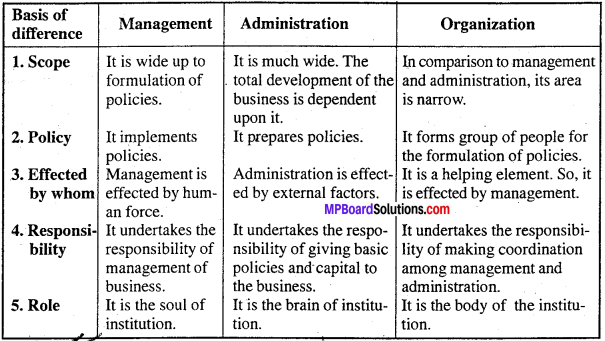
Question 9
Explain the characteristics of management as a process
Answer:
In order to achieve the best possible results management functions
performed systematically and in an orderly manner. As a process it has the following characteristics ;
1. Management is a Continuous Process: Management is not confined to handling and integrating human and material resources at a particular moment. It is an ongoing process. It involves continuous handling of problems and issues. Managers are concerned with constantly identifying the problems and solving them by taking appropriate actions. .
2. Integrating Process : Management works to bring together human, physical and financial resources so that there is harmony among them.. It integrating human efforts with non-human resources like machines, materials, technology, financial assets, furniture etc. The integration is done through planning organizing coordinating and controlling.
3. A Universal Process : Management functions are not confined to business alone, they are performed in non-business organization too, management is required in developed, developing and backward countries.
4. A Social Process : It is mainly a social process because the activities performed to achieve the goals are concerned largely with relations between people. All tasks of management involve interactions with one another managers work with and through people and achieve results for the benefit of people. Human factor is the most important part of management process. As a social process’it is concerned with making interaction between people useful for achieving organizational goals.
Question 10
Explain the meaning of coordination. What is its need in our life ? Explain.
Answer:
Meaning of coordination: Coordination means bringing all the activities of various levels of management together efficiently and effectively. Proper application of management principles helps in bringing about coordination. Coordination is a grouped activity where people work together for the common goal. In common language it means “Mutual Understanding”.
Need in our life :
1. Size of the organization : Need of coordination depend on the size of the organization. When the size of organization is big coordination is required because in large-scale organization more employees are there. Each person has its own aims and need. For the efficient work coordination among various activities is essential.
2. Functional differentiation : Functions of organization is divided into various departments. Each department work separately giving weight age to its efforts. But at the same time these departments are interdependent on each other. To reduce the gap between the efforts of various departments coordination is essential.
3. Specialization : Specialization plays important role in large-scale organization. There are many specialized persons in large-scale organization. Each one of them work according to their skill and efficiency. There may be differences among them so it essential to have common direction for this need of coordination is felt.
Question. 11.
Write the characteristics of profession.
Answer:
Following are the characteristics of profession :
1. Well defined group of knowledge : Profession is an organized and systematic body of knowledge. In profession technical knowledge is gained. Knowledge related to any profession can be gained only from certain special institution.
2. Aim is to render services : Aim of profession is to render services to people. In profession, remuneration for work rendered is essential. Doctors, lowers all render some services to people.
3. Profession is related to one or the other council: All profession is related to some council. These councils make rules and regulations for the entrance in the profession. They also issue certificate to them those who have completed the course. Professional has certain ethical code which are recognized by government. For example doctors takes oath of their morality before entering their profession.
4. Through entrance examination: Each profession has some entrance examination for example lowers have to give some exams while doctors have separate entrance exam. For example if one has to become the Chartered Accountant, he has to pass the exam which is organized Indian chartered accountant organization.
![]()
Question.12
write the difficulties which come in the way of coordination also suggest their solutions.
Answer:
Following difficulties come in the way of coordination. Some solutions are also
written here :
(i) Difference in organizational and individual objectives : It is universal truth that the aims of various workers differ form the organization where they work. The organization will always wish to earn more and more profit while the employees will wish to have more salary or wages.If the employee do the work honestly and sincerely then the aims of both can be fulfiled at a time and in establishing coordination there will be no problem.
On the other hand if the employees pay attention to achieve only their own aim then their this behaviour will be obstacle in the way of coordination. To end the gap between organizational and personal aim all employees of the organization should contribute towards the organization.
(ii) Difference in individual objectives : Employees working in organization also may have different objectives. Due to this the difference in working system may occur and negative effect on coordination is found. To overcome this problem, some objectives should be followed by all.
(iii) Problem in the evolution and measurement of work progress : Evaluation may differ in various department for the same work. It may create confusion for all workers. It has negative effect on coordination. For this organization should keep same evolution for the same type of work.
(iv) Complex organizational structure : Sometimes it is not clear who is under whom. In such case coordination becomes difficult. For this it becomes essential for high authority to make it clear the liability of each employee towards organization.
Question 13.
What challenges a global manager has to face ? Explain.
Answer:
Following are the challenges before global manager.:
(i) In the form of manager : A global manager has to establish various business relations with other organizations and other countries. For it the global manager relates himself with advocate and other officers. In U.S.A, Europe, etc. Indian technical employees are appointed. The manager keeps contacts with foreign companies for these appointments. He makes clear the importance of outsourcing.
(ii) In the form of divisional head : For global manager it becomes essential to form coordination between various divisions. He has to understand the requirements of customers. Most of the customers are of foreign countries like U.S.A, Europe etc. Global manager has to understand the requirements of these customers. He also tries to the priority of foreign customers.
(iii) In the form of leader : Global manager has to maintain awareness about the, , changing commercial situations and toward customer’s priority. He has to recognize the tendencies and opportunities getting through outsourcing. He should have inference about the expected risk.


